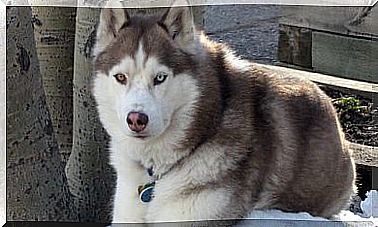My Dog doesn’t Speak, That’s Why I Understand Him
Although dogs do not have the gift of speech, they can communicate with us in many ways: through the ears, tail, hair, gaze, body position and even using vocal expressions. It is important to be able to understand and interpret the signals of dogs, to understand what they feel, what they want or what they need … words are superfluous!
The dog does not speak, however …
In relationships between human beings, words are often misunderstood and are sometimes used to lie and to deceive. However, there is non-verbal communication, that is, that expressed by the body, postures, etc., which is probably the most sincere. The dog knows how to interpret our non-verbal communication, such as the expression of the face, the movements, the tone of the voice. However, people are often unable to understand the dog’s communication cues.
A dog communicates through:
- The barks
- The yelps
- The howls
- The growl
- The looks
- The movements of the tail
- The movements of the ears
- The postures of the body
- The expressions of the face
“If dogs could talk, we would have the same difficulties with them as we have with people”
-Karel Čapek-
To understand your dog
Many of you will have heard of Chaser, a border collie able to distinguish between 1022 different terms and to associate each of them with the corresponding object. However, beyond the disquisitions and scientific experiments, anyone who has a dog knows perfectly well that he is able to recognize the moods of the owner and to behave accordingly.
It is important that the owner also knows how to interpret what the dog tries to communicate to him, through the means at his disposal. For this reason, it is necessary to observe your pet with patience, to decipher its movements and to grasp the meaning of its behavior.
What a dog communicates through its tail and ears
The tail of the dogs sends out unmistakable signals:
- When the dog wags his tail vigorously, he is happy.
- If the tail movement is slow, the dog is cautious.
- The stiff, straight tail is a warning sign.
- The tail hidden between the legs expresses fear.
The dog’s ears are also very expressive. For instance:
- Straight and forward are a sign of attention. This posture can also indicate curiosity or intention to do something.
- Placed on the skull they are synonymous with fear or threat.
- Forward and near the head, they could indicate aggression.
- Facing backwards can indicate sadness, anxiety or uncertainty.
Eyes that speak
The eyes of dogs are as expressive as those of people. Pay attention to the looks of your four-legged friend!
- Eyes wide open indicate that the dog is alert and ready to play; when they are half closed, however, it is possible that the animal feels restless and ready to attack.
- If the gaze is fixed, it indicates an attitude of defiance and domination.
- When your dog looks down he is showing respect and submission.
- When the dog squints he is happy and playful.
Gestures and postures
Also pay attention to these signs:
- If the dog lies on his stomach, he is showing respect towards another individual or passive submission (the dog throws himself on the ground showing the groin region).
- When the dog feels threatened, the hair along the back will likely straighten.
- When he is frightened he collects and crouches.
- When he keeps his tail down and moves it he is sad or does not feel well.
- When the dog is ready to attack it will likely show the Sclera (the white part of the eye) and stare at the potential threat. He will definitely keep his tail down, his body will be stiff and leaning forward, and he will grind his teeth.
When the dog is not comfortable, he will show it:
- Sneezing or yawning excessively.
- Licking his face.
- Stiffening the body.
Sound signals
You must learn to recognize all the facets of your dog’s barking and other sound signals in order to understand it. For instance:
- A short, high-pitched bark indicates aggression. A more guttural and short one is a warning of impending danger. A short, sharp one is a sign of friendship.
- If he growls in a serious tone, he shows aggression. A loud growl, without showing the teeth and with a medium-high pitch, expresses happiness. If he’s sweet, he’s asking you to play with him.
- A long, persistent howl indicates loneliness. If it is short to sharp and progressively increasing, it indicates happiness or emotion. The siren-like howl is a response to another howl or a constant noise.
- Short yelps indicate fear or anxiety. A low tone means the dog is anxious or submissive. The high pitched tone corresponds to a request for attention or severe physical pain.
With all these ways to communicate, if dogs also had the gift of speech… it would be too much.









